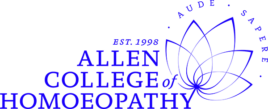Gallstones are hardened deposits that form in the gallbladder or biliary tree, consisting primarily of cholesterol, bilirubin, and bile salts. Their development is influenced by metabolic, environmental, and genetic factors. Gallstones are often mobile, but if they block the cystic duct, they can lead to biliary colic—a painful condition due to bile flow obstruction. Prolonged obstruction may result in gallbladder inflammation and infection from gut bacteria. If gallstones travel into the bile ducts, they can cause:
- Biliary obstruction, leading to jaundice, abdominal pain, and cholangitis
- Common bile duct obstruction, which may result in pancreatitis
- Chronic gallstones, causing fibrosis and impaired gallbladder motility
Symptoms
Gallstones may remain asymptomatic, but when they cause duct blockages, symptoms can include:
- Sudden and intense pain in the upper right abdomen
- Pain in the central abdomen, just below the breastbone
- Back pain between the shoulder blades
- Right shoulder pain
- Nausea or vomiting
A classic diagnostic sign of acute suppurative cholangitis, a complication of gallstones, is Charcot’s Triad, which includes:
- Fever
- Jaundice
- Upper right abdominal pain
Causes of Gallstone Formation
- Excess Cholesterol in Bile – Normally, bile dissolves cholesterol, but when the liver secretes too much, it crystallizes and forms stones.
- High Bilirubin Levels – Conditions such as liver cirrhosis, biliary infections, or blood disorders (e.g., sickle cell anaemia, leukaemia) increase bilirubin production, contributing to gallstone formation.
- Poor Gallbladder Emptying – If the gallbladder doesn’t empty completely or frequently, bile becomes concentrated, leading to stone formation.
Risk Factors
Several factors can increase the likelihood of gallstones, including:
- Gender – Women are at higher risk.
- Age – People over 40 years old are more susceptible.
- Lifestyle Factors – Being sedentary, overweight, or obese raises the risk.
- Diet – A high-fat, high-cholesterol, low-fiber diet contributes to gallstone formation.
- Medical Conditions – Diabetes, blood disorders like sickle cell anaemia, leukaemia).
- Hormonal Influence – Medications containing oestrogen (oral contraceptives, hormone therapy) can increase the risk.
- Family History – A genetic predisposition can make individuals more prone to gallstones.
Types of Gallstones and Their Complications
Types of Gallstones
Gallstones can be classified into two main types:
- Cholesterol Gallstones
○ The most common type, usually yellow in color.
○ Composed primarily of undissolved cholesterol, with traces of other substances.
- Pigment Gallstones
○ Dark brown or black in appearance.
○ Form due to excess bilirubin in bile, often associated with liver disease, biliary infections, or blood disorders.
Complications of Gallstones
- Gallbladder Inflammation (Cholecystitis)
○ Occurs when a gallstone blocks the neck of the gallbladder, leading to inflammation, severe pain, and fever.
- Blockage of the Common Bile Duct
○ Gallstones can obstruct the ducts that transport bile from the gallbladder or liver to the small intestine.
○ This results in severe pain, jaundice, and infection of the bile ducts (cholangitis).
- Blockage of the Pancreatic Duct
○ The pancreatic duct carries digestive enzymes from the pancreas to the small intestine.
○ A gallstone lodged in this duct can trigger pancreatitis, leading to intense, persistent abdominal pain that often requires hospitalization.
- Gallbladder Cancer
○ A history of gallstones increases the risk of gallbladder cancer.
○ However, gallbladder cancer is extremely rare, making the overall risk very low.

